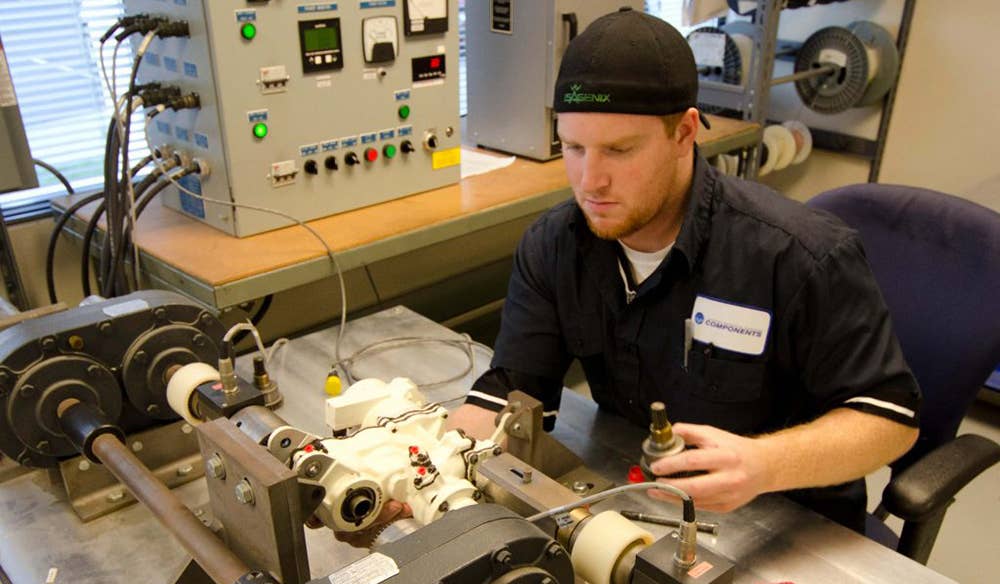
A technician tests a 767 cargo-door actuator. Aviation Technical Services
A new job title is appearing in classified ads for aviation and aerospace professionals: repair and test technician.
“A repair and test technician is a jack of all trades,” says Royce Wagner, who holds that title at GE Aviation’s Leading Edge Aviation Propulsion (LEAP) engine manufacturing and repair facility in Lafayette, Indiana. “You have to be technically proficient with your skills and hands, and also cognitively proficient, able to troubleshoot items and understand what can make them go wrong.”
A recent graduate with a Bachelor of Science degree in aviation maintenance management, Wagner, 37, spent 15 years as a military police officer and then civilian contractor before he “decided to pursue [his] passion for aviation.” Using the GI bill to fund his education, he had the GE job offer in hand when he finished school last December.
“I’m blown away when I go to work every single day in my first job in aviation,” he says.
The new career category reflects the growing sophistication both of aircraft components and systems and the equipment used to maintain, test and repair them. Aviation maintenance is “viewed as a blue-collar industry, but it has become extremely high-tech,” says professor Chuck Horning, department chairman of Aviation Maintenance Science at Embry-Riddle Aeronautical University. The expertise required today makes mechanics “feel more like computer technicians than aircraft technicians,” he says. “That’s not to say you won’t get your hands dirty, but it’s not like 50 years ago.”
Meanwhile, demand for repair and test technicians is growing across all sectors, from general aviation to aerospace, further fueled by an overall shortage of aviation mechanics. “Right now the opportunities are really, really good, and just going to get better,” Horning says. “We’re coming into a period of time where there’s going to be more openings for technicians than there will be technicians available.”
Wagner works on engines returned to the factory for repair or maintenance.
“My day is extremely diverse,” he says. “I can jump from working on a high-pressure rotor to a stage one or stage two shroud or a low-pressure turbine. I work with a full spectrum of heavy-duty lifting cranes, high-pressure hydraulic presses for mating and decoupling internal engine parts, and everything any mechanic or technician would love to work with.”
The engines’ repair issues are usually identified in the field, but sometimes the write-ups are incorrect, and Wagner and other technicians have to determine the real problem. Technicians collaborate with the engineering team and the customer to craft a repair solution.
“Even more critical than technical skills is your ability to work with others,” Wagner says.
Job requirements vary with the employer. An FAA airframe and power plant (A&P) license can provide the basic skills to land most such positions, says Horning. GE mandates a high school diploma and a power plant license.
Pay is hourly, and new hires typically earn in the “mid- to upper 40s,” says Horning. But with opportunities expanding, repair and test technicians can likely go where they want from there. Says Wagner, “It’s pretty amazing what you can do once you get out in the field.”
Learn more about these careers here.

Sign-up for newsletters & special offers!
Get the latest FLYING stories & special offers delivered directly to your inbox






